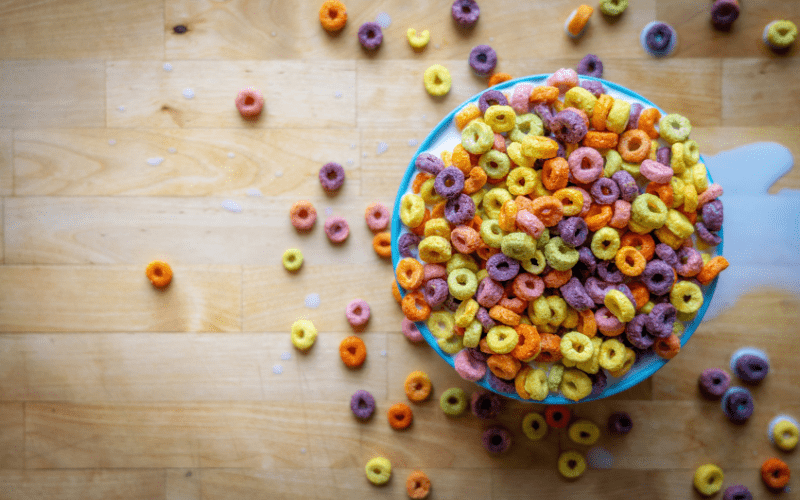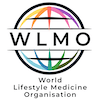
How accurate are Australia’s Health Star Ratings?
Health Star Ratings
I remember when I first moved to Australia, someone offered me a ‘nutritional’ drink. After my first sip of Milo (the nutritional drink), I reached across the table and looked at the packaging with the healthy, happy child playing soccer on the green package and said, “this isn’t healthy, it’s basically hot chocolate.” I recall a time I asked a friend for a recommendation for a healthy cereal option. Being from Canada, the cereal choices are of course different. I got the recommendation and remember walking across the kitchen while chewing on my first mouthful of Nutrigrain, only to see the ingredients listed on the box. I looked at the number of stars and thought ‘nonsense!’ I was bewildered by its “Health Star Rating (HSR),” a voluntary initiative to help us understand the nutritional value of packaged foods in Australia. HSRs range from .5 stars to 5 stars. Thus began my quest to understand the HSR system.
At first glance, you might think a number scored out of 5 is a simple, straightforward concept. However, it required several visits to the HSR website, emails, and a couple phone calls for me to start grasping the complexity of the star ranking system.
What are HSRs?
The HSR website advises: “The Health Star Rating system was developed through a collaborative process between Australian state and territory governments, the food manufacturing and retail industry, public health organisations, and consumer representatives. The calculator for the HSR system was developed in consultation with Food Standards Australia New Zealand and other technical and nutritional experts.”
But what does all that really mean when I stand in a grocery aisle?
Interestingly, the HSR website states “We also know that a rating system like this is complex, and there is no perfect solution.” Yet their advertising campaign says “The Health Star Rating. The more stars, the healthier the choice. Simple.”
Not quite that simple, I’d have to say. There is a labyrinth of rules to navigate before understanding what the rating really equates to. Let’s dive into the complexities of the HSR system.
Explaining the HSR system
Firstly, because the HSR is designed to be placed on packaged foods only, whole foods (think fresh fruits and vegetables) were previously unable to carry stars, and yet ‘discretionary foods,’ such as confectionary, can. As of 2020, a sign near fresh foods can now display 5 stars because all fresh fruit and veg are 5 out of 5 stars. Therefore, we know all items ranked with 5 stars are not equal.
There are 6 categories of foods, meaning a specific star rating in one category doesn’t equate to the same ‘healthiness’ as the same star rating in another category. It’s also important to recognise that none of those categories compare the ratings with whole, fresh food like fruit and veg. I haven’t seen any guidance in the stores around these categories, so a person must search online to find them.
The categories are:
- Non-dairy beverages, jellies, and water-based ice confections
- Milk and Dairy beverages (and alternatives)
- Foods
- Dairy foods (and alternatives)
- Oils and Spreads
- Cheese
Notice: Fresh fruit and veg are not in any of these categories.
The categories aren’t intuitive. For example, orange juice is compared to Coca-Cola, not an orange. Also, whilst I would never have considered comparing a beverage to jelly, these items are in the same category. Category 2 is literally everything else but category 1 and 3. Which is ill-defined to say the least.
Additionally, the health of a food is compared only with other foods in the same category or subcategory. For example, one sub-category of dairy has calcium greater than 320 mg/100 g, and another less than. Should I want to compare two dairy products, I would need to know their calcium content to know if they were in the same subcategory to compare.
The healthier products get 5 stars, and the less healthy get less stars. Unless you are ready to dig into their website, we don’t know which categories they are in. This is potentially misleading and can be confusing when you are trying to make healthy food choices.
How the stars are calculated
The number of stars is calculated with a formula that looks at the energy, saturated fat, sodium, and total sugars in the food. In all but one category, the amount of fruit, veg, legumes, nuts, protein, and fibre in the food increase the score.
Nutrients may be mentioned as “high” or “low” but are not included in the calculation. The more “real” foods, like fruit and veg, will provide more nutrients. But I wonder; Does this mean there are foods with high HSRs because they are low in fat, sodium, and sugar, but have no nutrients to offer? Better than junk food as a snack but not part of a healthy diet?
HSR-excluded categories
To further complicate the system, HSRs aren’t used on baby food and formulas, single ingredient foods (i.e., flour), sports food supplements, or alcohol.
How to interpret HSRs
When I first looked into the HSR in 2021, a HSR representative advised me that the ratings were mainly designed for the food industry, rather than for the consumer. They explained it works because some manufacturers (for example, Milo and Nutrigrain), made their products healthier in response to the improved HSR calculator that lowered their ratings. To be clear here, this means the foods are “healthier,” not “healthy.” The healthy option in the cereal aisle is the quiet, shy package of oats which, because of its single ingredient status, doesn’t get a HSR label and no one knows that THAT is the healthy option.
Revising HSR categories and criteria
HSRs are periodically reviewed, with updates on the categories and criteria, with the most recent review being 2020. Of course, there is a challenge in that the public must do research if they want to understand the new rules each time the categories and criteria are updated. A one-size-fits-all HSR for all foods and beverages would eliminate this confusion. It’s obvious the 5-star fresh fruit/veg is healthier than the fruit roll-up, so comparing all foods together, including fruit and vegetables, would make more sense.
What is my rating for HSRs?
1/5 stars for trying. This can be done so much better, in a way that makes it much simpler for consumers to follow. Our food is an industry, too often at the expense of our health. We must make making healthy decisions easy for people. We need to be able to look at a label and say “yes, that’s a healthy choice for my child and I,” without grappling with calculation formulas and categories. The standard for 5/5 should be whole foods (fruit and veg).
I was very pleased to see the change since that last time I looked at HSR that we are now allowed to have 5-star ratings for fruit and veg displayed: So grocery stores, please put those stars on them!
To provide a more accurate accounting of the quality of the foods we eat, I believe we need them all to be in one category and rated by the same standard. We need to know what the star rating is when compared to fresh, whole foods, not the jelly in another aisle. And please, oh please, for the love of parents and their children, label baby and toddler foods so they can fuel and grow their children with the healthiest options! Leaving parents in the dark and with only advertising as guidance is a grave error and needs to be corrected promptly.
In general, HSR is the first step in the right direction with a long way to go.
Call to action
HSR is happy to hear your concerns and ideas so please contact them and ask that baby foods be labelled or with any other concerns or ideas.
Remember that the produce aisle is always 5 out of 5 stars!
“If it looked like it came off of a farm or a tree, you know it’s right for me.”
This article has been written for the Australasian Society of Lifestyle Medicine (ASLM) by the documented original author. The views and opinions expressed in this article are solely those of the original author and do not necessarily represent the views and opinions of the ASLM or its Board.



